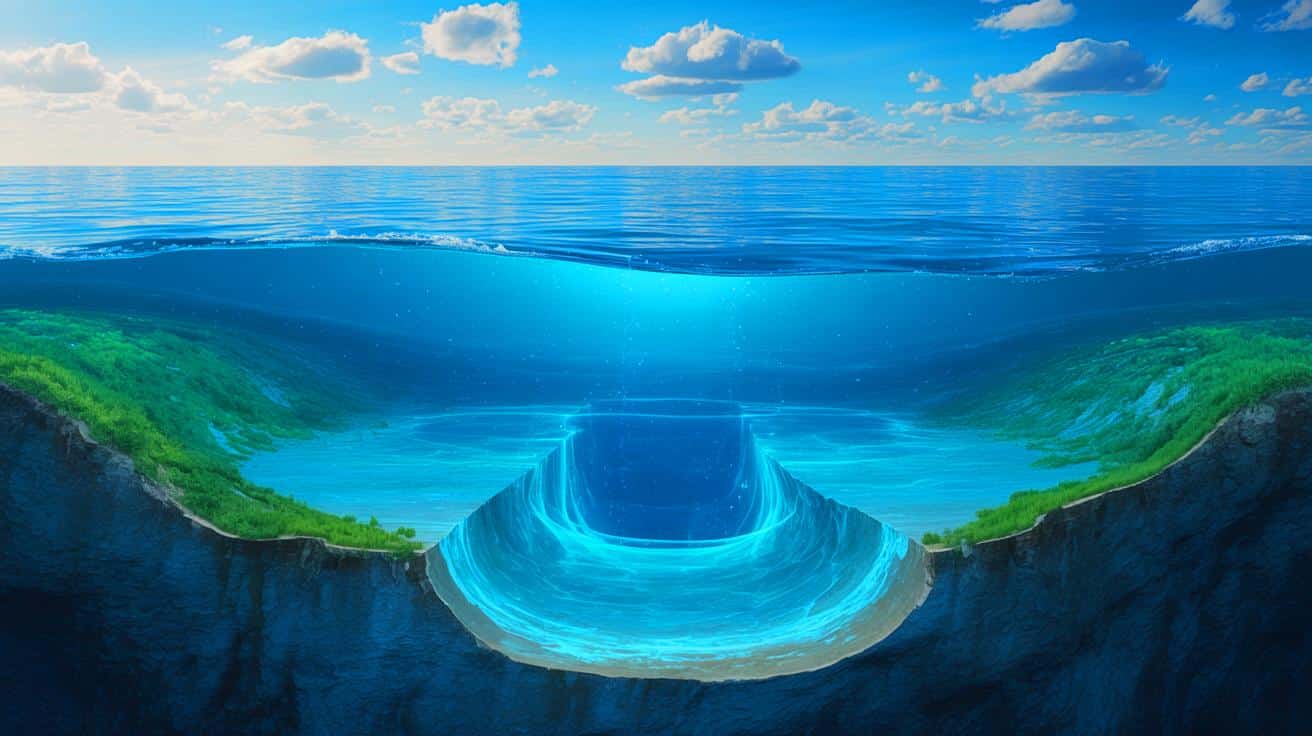In summary
California shoots pointed words at states upriver, as negotiators struggle toward sharing supplies. Without a deal, the Trump Administration will step in.
After one of the Colorado River’s driest years in decades, Lake Mead and Lake Powell — the largest reservoirs in the country — could see alarming declines in the coming years, the U.S. Bureau of Reclamation announced today.
Federal officials again called for Arizona and Nevada to cut back their supplies from the overtapped river — though California, with its senior claims to the river’s water, will be spared.
While expected, today’s two-year projection ratchets up tension among seven states in the Colorado River basin, which have struggled to agree on the river’s management after 2026, when current guidelines expire.
“The urgency for the seven Colorado River Basin states to reach a consensus agreement has never been clearer. We cannot afford to delay,” Scott Cameron, the Department of the Interior’s Acting Assistant Secretary for Water and Science, said in a statement.
Lower-basin states — California, Arizona, and Nevada — are at odds with upper-basin states — Colorado, Wyoming, Utah and New Mexico — as they negotiate over dwindling water supplies.
“We’re really sort of staring at what the deal is right now. But as close as it is, the harder it gets,” J.B. Hamby, California’s chief negotiator as chairman of the Colorado River Board of California, told CalMatters.
Hamby also directed pointed words toward the upper-basin states.
“The future of the Colorado River cannot rest on our shoulders alone. We have to ensure that every part of the basin takes responsibility for protecting the river’s future,” he added, in a statement.
Becky Mitchell, Colorado’s commissioner to the Upper Colorado River Commission, countered in an email: “If the lower basin is able to join us in adapting to a drier river, a basin states consensus is likely.”
Federal officials have warned that basin states must hash out the broad strokes of an agreement by Nov. 11, or risk the U.S. government imposing its own.
Interior Secretary Doug Burgum is “not looking forward to that,” Cameron warned at a June conference. “But in the absence of a seven-state agreement, he will do it.”
The stakes for California are high. California takes the biggest share of Colorado River water — largely to irrigate half a million acres of alfalfa, winter vegetables and other crops in the Imperial Valley, and also to supply urban Southern California via the Metropolitan Water District. More than half of the power generated at Lake Mead’s Hoover Dam goes to California.
As negotiators haggle over a seven-state deal, California water suppliers are also in parallel talks about how to share future shortages amongst themselves and with Arizona, said Bill Hasencamp, Metropolitan Water District’s manager of Colorado River resources.
Plunging water levels at Lake Mead and Lake Powell only make that harder, he added.
“Even with all of our efforts to do record amounts of conservation, it’s still not enough,” Hasencamp said. “We have to do even more than we’ve been doing in dry years.”
Dividing up a shrinking river
For more than a century, a collection of deals, treaties and legal agreements have divided up the Colorado River’s water, a vital supply for 40 million people, seven states in the U.S. and two in Mexico, 30 federally recognized tribal nations and 5.5 million acres of agriculture.
Demand has long outstripped supply, and climate-fueled megadrought and aridification have starved the river in recent decades — drying up the equivalent of Lake Mead by 2021.
By the summer of 2022, the driest 23-year stretch in over a century had sent the river’s massive reservoirs plunging to historic lows. It was a crisis for the basin, prompting the Biden administration to call for emergency cuts or face federal intervention.
But even with billions of dollars in federal funding and temporary drought efforts anticipated to yield 3.7 million acre-feet of water conservation by the end of 2026, Lake Powell and Lake Mead are once again dipping concerningly low.
Negotiating a deal is hard enough, said Tina Shields, water department manager of the Imperial Irrigation District, which receives the largest share of California’s Colorado River water. Worsening conditions mean “you have to do a lot more sooner rather than later. It doesn’t make it impossible, but it makes it more challenging.”
The reservoirs, each only 31% full, are projected to remain at levels in the coming year that trigger 18% cuts to Arizona’s total allotment, 7% to Nevada’s, and a 5% reduction for Mexico.
Federal officials today released multiple different scenarios for the next two years. The one that experts say is most likely shows that one more dry year could send Lake Powell plunging below the levels needed to generate power by December 2026.
The problem is that as climate change drives temperatures higher, thirsty soils drink up runoff before it reaches the river. Though precipitation reached 80% of average in the upper basin this year — and the snowpack hit 92% of the median at the end of March — spring runoff into Lake Powell was only 41% of normal.
Brad Udall, a senior water and climate research scientist at Colorado State University’s Colorado Water Institute, told CalMatters that the situation is “beyond awful.”
“I’m still optimistic that we’re going to pull a rabbit out of the hat at the last minute … although there are mumblings that things are not going so well, ” he said.
Now, under the Trump administration, a new proposal to allocate a certain percentage of the river’s average flow to each basin is coming together, according to Hamby, California’s negotiator. Under the proposal, the lower basin and Mexico would receive some as-yet unknown percentage between 55% and 75% of average flow.
The question that must be answered by November is what that percentage should be.
“In our case, it would be an agreement to live with less than we’re otherwise entitled to,” Hamby said. And the upper basin states, he added, “may actually have to do something wild and crazy, like conserving water sometimes.”
Becky Mitchell in Colorado said that the water users in the upper basin already reduce their use during drier years, with shortages averaging 1.3 million acre-feet per year.
Moving forward with a plan, she said, “will depend upon the specifics.”
If current policies aren’t updated, the reservoirs are highly likely to reach deadpool — the level at which water can no longer be released — at least once in the coming decades, according to a soon-to-be published study.
“There’s a risk of these reservoirs dipping into lower water levels that can make them inoperable,” the study’s lead author Benjamin Bass, a researcher at UCLA’s Center for Climate Science, told CalMatters. “That’s really why we need to shift away from existing policy to something more stringent.”
Source link

